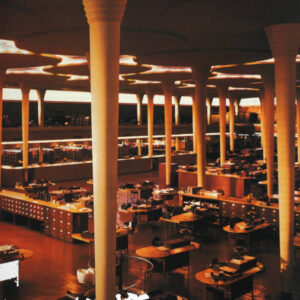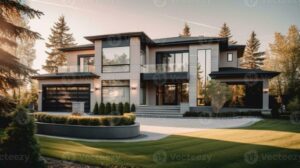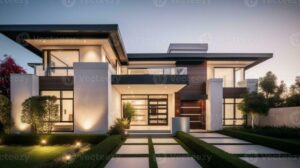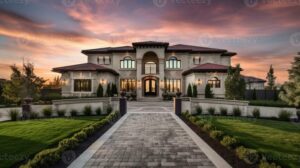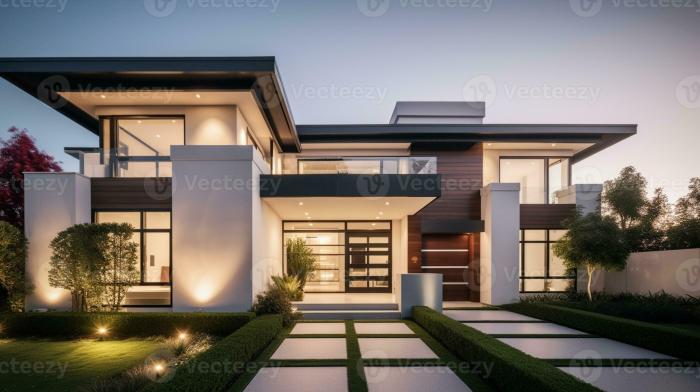
The concept of luxury real estate climate refuges stands at the intersection of elegance and sustainability, where high-end living meets the pressing realities of climate change. As more individuals seek sanctuary from environmental instability, these properties not only offer luxurious amenities but also serve as safe havens amidst global uncertainty. This narrative explores the allure, investment potential, and market dynamics of these exclusive retreats designed for both comfort and resilience.
By identifying key characteristics that define climate refuges in the luxury sector, we can begin to understand their rising significance. Factors such as strategic location, advanced sustainability features, and integration of smart home technologies are influencing the demand for these unique real estate investments. With climate change reshaping our environment, the appeal of these properties continues to grow as they offer not just homes but a lifestyle rooted in security and modernity.
Luxury Real Estate Climate Refuges
The concept of luxury real estate climate refuges has emerged as a crucial response to the growing threats posed by climate change. These properties not only offer opulence and comfort but also serve as safe havens for individuals seeking to escape the increasingly unpredictable effects of global warming. As sea levels rise and extreme weather events become more frequent, the significance of these refuges has never been more pronounced.Key characteristics that define a climate refuge in the luxury real estate market include strategic location, sustainable design, and advanced infrastructure.
Properties in these areas are typically situated in regions less susceptible to the adverse impacts of climate change, such as elevated terrains or areas with stable weather patterns. Additionally, luxury climate refuges often feature eco-friendly designs, such as solar panels, rainwater harvesting systems, and energy-efficient appliances, ensuring minimal environmental impact while maximizing comfort.Environmental factors influencing the demand for climate refuges include rising sea levels, increased flooding, and extreme heat waves.
As more individuals become aware of the realities of climate change, the appeal of properties that offer both luxury and safety is growing rapidly. This demand is particularly evident in regions that have been historically stable but are now experiencing unpredictable weather patterns.
Real Estate Investment in Climate Refuges
Investing in luxury real estate climate refuges presents several potential benefits. First and foremost, these properties provide a hedge against the risks associated with climate change, ensuring long-term value retention. Furthermore, the unique appeal of climate refuges allows investors to tap into a niche market, attracting affluent buyers who prioritize safety and sustainability.Successful luxury real estate investments in climate refuge locations can be seen in areas such as the Pacific Northwest, where properties in elevated regions are witnessing increased interest.
For instance, homes in Seattle and Portland, known for their temperate climates and eco-conscious communities, have experienced a surge in valuations as buyers seek safer, more sustainable living options.When comparing the investment risks associated with traditional real estate and climate refuges, it becomes clear that climate refuges are increasingly seen as more resilient. Traditional investments can be vulnerable to economic downturns and natural disasters, while climate refuges often maintain their value due to increasing demand driven by climate awareness and safety concerns.
Real Estate Market Trends
Current trends in the luxury real estate market indicate a significant shift towards climate refuges as buyers become more environmentally conscious. There is a notable increase in demand for properties equipped with sustainable technologies and located in areas deemed climate-safe. This trend is reshaping the luxury real estate landscape, leading to a growing number of developments specifically designed with climate resilience in mind.Emerging markets that are becoming popular for luxury climate refuges include regions in Canada and New Zealand.
Both countries offer stunning natural landscapes, combined with stable climates that are less affected by extreme weather patterns. These locations have begun to attract global buyers looking for both beauty and safety in their real estate investments.Climate change is reshaping the luxury real estate landscape by encouraging developers to incorporate sustainable practices into their projects. This includes using eco-friendly materials, implementing smart technologies, and prioritizing energy efficiency in new builds.
As a result, the luxury market is evolving to meet the demands of a more environmentally conscious buyer base.
Smart Home Technologies in Luxury Real Estate
The integration of smart home technologies in luxury climate refuges is becoming increasingly common. These advancements not only enhance the living experience but also contribute to sustainability efforts by optimizing energy use and reducing waste. Smart systems can monitor energy consumption, control heating and cooling efficiently, and even manage water usage, making luxury homes more eco-friendly.Insights into how smart technologies enhance sustainability in luxury real estate reveal a significant shift towards automation.
For instance, homes equipped with smart thermostats can adjust temperatures based on occupancy, minimizing energy waste. Additionally, smart irrigation systems can optimize water usage for landscaping, ensuring that gardens remain lush while conserving resources.Examples of luxury homes that incorporate advanced smart home features include properties in Silicon Valley, where innovation meets luxury. These homes often showcase cutting-edge technology, such as integrated home automation systems that control lighting, security, and climate systems from a central hub or mobile device, enhancing both convenience and sustainability.
Commercial Real Estate and Climate Resilience
Luxury real estate developers are increasingly addressing climate resilience in commercial properties. Understanding the long-term implications of climate change, these developers are designing buildings that can withstand extreme weather events, using materials and techniques that enhance durability and reduce environmental impact.Investment opportunities in luxury commercial real estate versus residential climate refuges highlight the unique advantages of both markets. While residential climate refuges cater to individuals seeking safety and comfort, commercial properties can offer higher returns through rental income and business opportunities.
The growing demand for eco-friendly commercial spaces also attracts businesses committed to sustainability, further driving interest in this sector.Regulatory trends impacting luxury commercial real estate in climate-prone areas are evolving rapidly. Governments are beginning to impose stricter building codes and sustainability requirements to mitigate climate risks, influencing how developers approach new projects. This shift not only reflects increasing awareness of climate challenges but also presents an opportunity for innovation in luxury commercial developments.
Luxury Homes as Safe Havens

The appeal of luxury homes as safe havens amidst climate challenges lies in their ability to provide comfort and security. These properties are often designed with features that prioritize climate resilience, such as reinforced structures, elevated foundations, and advanced drainage systems, ensuring safety against flooding and severe weather.Insights into the design features of luxury homes that prioritize climate resilience include the use of energy-efficient materials and technologies that minimize environmental impact.
Many luxury residences now feature green roofs, solar panels, and water reclamation systems, showcasing a commitment to sustainability while maintaining high aesthetic standards.The psychological benefits of owning a luxury climate refuge are significant. Homeowners feel a greater sense of security knowing their investments are protected against the uncertainties of climate change. This peace of mind, combined with the luxurious amenities these properties offer, makes luxury climate refuges highly desirable.
Luxury Real Estate Market Dynamics
Analyzing the supply and demand dynamics in the luxury real estate market focused on climate refuges reveals a growing imbalance in favor of demand. As awareness of climate risks increases among affluent buyers, the competition for prime climate refuge properties intensifies, often driving prices higher.The role of affluent buyers in driving trends within luxury climate real estate is crucial. These individuals are increasingly seeking properties that not only reflect their status but also align with their values of sustainability and environmental responsibility.
Their purchasing decisions are shaping the market, leading to an increased emphasis on climate resilience in luxury developments.The impact of global economic conditions on luxury climate refuge investments is notable. Economic stability tends to encourage higher investments in luxury properties, while downturns can lead to increased interest in safe havens. As the world grapples with economic uncertainties alongside climate challenges, luxury climate refuges remain a popular choice for investors looking to secure their assets.
End of Discussion
In conclusion, luxury real estate climate refuges are more than mere residences; they represent a proactive approach to living in harmony with our changing world. As the market evolves, these properties not only promise a lavish lifestyle but also address critical environmental challenges, making them a smart investment for the future. With the right blend of technology, sustainability, and luxury, these homes are poised to become the preferred choice for discerning buyers looking for both refuge and opulence.
Key Questions Answered
What are luxury real estate climate refuges?
Luxury real estate climate refuges are high-end properties designed to offer safety and comfort amid climate challenges, featuring sustainable design and advanced technologies.
Why are they becoming popular?
The increasing awareness of climate change and the desire for secure living spaces have driven demand for luxury climate refuges.
What features should I look for in a climate refuge?
Key features include energy-efficient systems, smart home technology, and locations that are less vulnerable to environmental threats.
Are there investment risks associated with climate refuges?
While they offer unique benefits, risks include fluctuating market values and the potential for regulatory changes affecting property use.
How do smart home technologies enhance these properties?
Smart technologies improve energy efficiency, security, and convenience, aligning with the sustainability goals of climate refuges.
